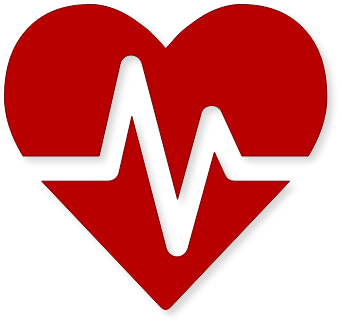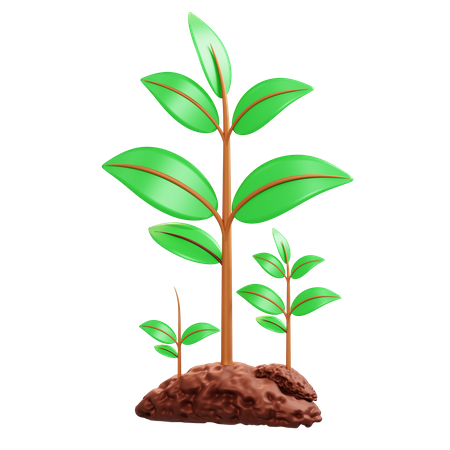
Deutsch-Chinesische Enzyklopädie, 德汉百科
 Traditional medicine
Traditional medicine





Die Tibetische Medizin (tibetisch: བོད་སྨན Wylie bod sman) auch Traditionell Tibetische Medizin, kurz TTM (tib. བོད་ཀྱི་གསོ་བ་རིག་པ་ Wylie bod kyi gso ba rig pa) ist ein in Tibet entwickeltes Heilsystem, das vorwiegend in den Ländern und Regionen des Hochlands von Tibet verbreitet ist. Über ihren Ursprung gibt es verschiedene Legenden.[1]
Als Basistexte der tibetischen Medizin gelten das „Gyüshi“ (tibetisch: rgyud bzhi; „Vier Tantras“, „Vier Wurzeln“)[2] von Yuthok Yönten Gönpo (dem Älteren) (tibetisch: g.yu thog (rnying ma) yon tan mgon po; 708–833) und das „Yuthok Nyingthig“ (tib.: g.yu thog snying thig; „Herzessenz von Yuthok“) von Yuthok Yönten Gönpo (dem Jüngeren) (tibetisch: g.yu thog (gsar ma) yon tan mgon po; 1126–1202). Im 17. Jahrhundert wurden Texte des „Gyüshi“ unter dem Titel „Der blaue Beryl“ erstmals zu Ausbildungszwecken illustriert und von Desi Sanggye Gyatsho kommentiert.
藏医学(藏文:བོད་སྨན་,威利:bod sman),简称为藏医,是一种流传在西藏自治区的传统医学,以诊脉和尿液分析等方式诊断,利用行为和饮食调节,以及天然材料(草药和矿物等)组成的药物以及疗法(藏式针灸、艾灸等)治疗疾病。藏医属于西藏民族的民族医学,它以印度佛教文献(例如阿毘达磨和密续)和传统医学阿育吠陀为基础,至今仍然在中国、印度、尼泊尔、不丹、拉达克、西伯利亚和蒙古发展。




中医学,亦称汉医学,是一种起源于中国汉族且至今已有千年历史的传统医学。与现代西方医学相比较时,其常被归入传统医学的范畴。因此,现今世界上的中医学的发展目标,多是追求自身的科学化和现代化。
目前华人圈的中医行业以中国大陆为主流,按照中华人民共和国全国科学技术名词审定委员会审定的名词,中医学是“以中医药理论与实践经验为主体,研究人类生命活动中健康与疾病转化规律及其预防、诊断、治疗、康复和保健的综合性科学”。
In der traditionellen chinesischen Medizin (TCM, chinesisch 中醫學 / 中医学, Pinyin zhōngyīxué – „Lehre der Chinesischen Medizin“, umgangssprachlich meist 中醫 / 中医, zhōngyī – „chinesische Medizin“[1][2], selten 漢醫學 / 汉医学, hànyīxué – „Lehre der Han-Medizin“) werden viele historisch unterschiedliche chinesische Behandlungsformen sowie einige diagnostische Modalitäten zusammengefasst. Die TCM beruht auf Annahmen, die der taoistischen Philosophie entstammen. Der Begriff wurde ursprünglich vom kommunistischen Politiker und Machthaber Mao Zedong eingeführt und gilt als ideologisch motiviertes Kunstprodukt.[3][4][5] Die „im Westen“ gebräuchliche Bezeichnung traditionelle chinesische Medizin ist in China unüblich.

中西医结合,是将传统的中医中药知识和方法与西医西药的知识和方法结合起来,在提高临床疗效的基础上,阐明机理进而获得新的医学认识。中西医结合是中华人民共和国建立后政府长期实行的方针。中西医结合是中、西医学的交叉领域,也是中国医疗卫生事业的一项工作方针。中西医结合发轫于临床实践,以后逐渐演进为有明确发展目标和独特方法论的学术体系。
Die Integration von chinesischer und westlicher Medizin bedeutet, das Wissen und die Methoden der traditionellen chinesischen Medizin mit denen der westlichen Medizin zu kombinieren, um die klinische Wirksamkeit zu verbessern, Mechanismen zu erhellen und neue medizinische Erkenntnisse zu gewinnen. Die Kombination von chinesischer und westlicher Medizin ist eine langfristige Politik, die von der Regierung der Volksrepublik China seit ihrer Gründung verfolgt wird. Sie ist ein Schnittpunkt zwischen chinesischer und westlicher Medizin und gehört zu den Arbeitsgrundsätzen der chinesischen Medizin- und Gesundheitsunternehmen. Die Integration von chinesischer und westlicher Medizin begann in der klinischen Praxis und hat sich seitdem zu einem akademischen System mit klaren Entwicklungszielen und einer einzigartigen Methodik entwickelt.

韩医学(韓語:한의학),又称东医(韓語:동의),朝鲜民主主义人民共和国称为高丽医学[1],是朝鲜半岛的传统医学,主要是在傳統中醫的體系上结合朝鲜本土医药發展起來[2][3][4]。中国境内的朝鲜族自治区域称为朝医。朝医是中国五大少数民族医学之一[註 2]。
朝鲜半岛本土传统医学最初称为“乡药”[6]:5-6。朝鲜王朝中期,朝鲜医学家许浚将《黄帝内经》和金元四大家的中医理论与本国传统乡药統合开创“东医”[6]:95。朝鲜王朝末期,医学家李济馬创立以四象为纲的“四象医学”成为韩医学的重要组成部分[7]。韩医以“天、人、性、命”整体观和“四维之四象”结构为理论指导,在临床上施行辨象施治[2]。韩医与中医有许多共通之处,但韩医发展了其独具特色的治疗方法,融合了除中医以外的其它医学知识[2]。在临床方面,韩医非常注重针药并用的治法[7],應診甚少使用脈診[8]。
1986年,韩国将日本式的“汉医”一词改称“韩医”。2006年,韩国为配合2013年东医名著《东医宝鉴》问世400周年的纪念活动申请将此书登录为世界记忆遗产名录。此后,《广州日报》在头版上援引民俗专家白庚胜的话以《韩国拟将中医改为韩医申报“世遗”》为题进行报道,引起舆论对韩医的关注和不满。韩国被指欲割断韩医与中医的源出关系,以突出其医学的本国化[9]。不过也有舆论表示《广州日报》的报道存在“常识性错误”,并支持包括韩医、中医在内的传统医学都成为文化遗产[10]。
Traditional Korean medicine[n 1] (known in North Korea as Koryo medicine) refers to the forms of traditional medicine practiced in Korea.
Korean medicine traditions originated in ancient and prehistoric times and can be traced back as far as 3000 B.C. when stone and bone needles were found in North Hamgyong Province, in present-day North Korea. Korean medicine originated from China. [1][2] In Gojoseon, where the founding myth of Korea is recorded, there is a story of a tiger and a bear who wanted to reincarnate in human form and who ate wormwood and garlic. In Jewang Ungi (제왕운기), which was written around the time of Samguk Yusa, wormwood and garlic are described as 'edible medicine', showing that, even in times when incantatory medicine was the mainstream, medicinal herbs were given as curatives in Korea. Medicinal herbs at this time were used as remedial treatment such as easing the pain or tending injury, along with knowing what foods were good for health.
In the period of the Three Kingdoms, traditional Korean medicine was mainly influenced by other traditional medicines such as ancient Chinese medicine. In the Goryeo dynasty, a more intense investigation of domestic herbs took place: The result was the publication of numerous books on domestic herbs. Medical theories at this time were based on the medicine of Song dynasty, but prescriptions were based on the medicine of the Unified Silla period such as the medical text First Aid Prescriptions Using Native Ingredients or Hyangyak Gugeupbang (향약구급방), which was published in 1236. Other medical journals were published during this period like Introductory Guide to Medicine for the General Public or Jejungiphyobang (제중입효방).
Medicine flourished in the period of the Joseon. For example, the first training system of nurses was instituted under King Taejong (1400-1418), while under the reign of King Sejong the Great (1418-1450) measures were adopted to promote the development of a variety of Korean medicinal ingredients.[3] These efforts were systematized and published in the Hyangyak Jipseongbang (향약집성방, 1433), which was completed and included 703 Korean native medicines, providing an impetus to break away from dependence on Chinese medicine.[4] The medical encyclopaedia named Classified Collection of Medical Prescriptions (醫方類聚, 의방유취), which included many classics from traditional chinese medicine, written by Kim Ye-mong (金禮蒙, 김예몽) and other Korean official doctors from 1443 to 1445, was regarded as one of the greatest medical texts of the 15th century.[4] It included more than 50,000 prescriptions and incorporated 153 different Korean and Chinese texts,[4] including the Concise Prescriptions of Royal Doctors (御醫撮要方, 어의촬요방) which was written by Choi Chong-jun (崔宗峻, 최종준) in 1226. Classified Collection of Medical Prescriptions has very important research value, because it keeps the contents of many ancient Korean and Chinese medical books that had been lost for a long time.[5]
After this, many books on medical specialties were published. There are three physicians from the Joseon Dynasty (1392-1910) who are generally credited with further development of traditional Korean medicine—Heo Jun, Saam, and Lee Je-ma. After the Japanese invasion in 1592, Dongeui Bogam (동의보감) was written by Heo Jun, the first of the major physicians. This work further integrated the Korean and Chinese medicine of its time and was influential to Chinese, Japanese and Vietnamese medicine.
The next major influence to traditional Korean medicine is related to Sasang typology (사상의학). Lee Je-ma and his book, The Principal of Life Preservation in Oriental Medicine (東醫壽世保元, 동의수세보원) systematically theorized with the influence of Korean Confucianism and his clinical experiences in Korea. Lee Je-ma said that even if patients suffer the same illness, patients need to use different herbal applications to treat the same illness due to the pathophysiologies of individuals. He stresses that the health of human body had a close relationship with the state of mind. He believed that the human mind and body were not separate and they closely reflected each other, and the aspect of mind needed to be considered when examining the causes of disease. Thus, not only food and natural environment but also emotional changes in humans can be another major reason for illness. He believed that medical diagnosis and treatment should be based on person's typology rather than on symptoms alone and each person should be given different prescriptions depending on the constitution of the individual.[6] Sasang typology (사상의학) focuses on the individual patients based on different reactions to disease and herbs. Treat illness by the treatment of the root cause through proper diagnosis. Key to this diagnosis is to first determine the internal organs or pathophysiology of each patient.[7]
The next recognized individual is Saam, a priest-physician who is believed to have lived during the 16th century. Although there is much unknown about Saam, including his real name and date of birth, it is recorded that he studied under the famous monk Samyang. He developed a system of acupuncture that employs the five element theory.
In the late Joseon dynasty, positivism was widespread. Clinical evidence was used more commonly as the basis for studying disease and developing cures. Scholars who had turned away from politics devoted themselves to treating diseases and, in consequence, new schools of traditional medicine were established. Simple books on medicine for the common people were published.

Traditional Mongolian medicine developed over many years among the Mongolian people. Mongolian medical practice spread across their empire and became an ingrained part of many other people's medical systems.
The Mongols were part of a wider network of Eurasian people who had developed a medical system of their own, including the Chinese, Korean, Tibetan, Indian, Uighur, Islamic, and Nestorian Christians. They took the medical knowledge of these people, adapted it to develop their own medical system and at the same time organized an exchange of knowledge between the different people in their empire. On their journeys throughout Asia, the Mongols brought with them a team of doctors. Usually foreign, these doctors themselves had brought medical knowledge from other people in Asia to the Mongol court. They serve three purposes on the journeys on which the accompanied Mongol princes. Their first purpose was to be the personal physicians of the princes in case they required medical attention. The second was to observe and obtain any new medical knowledge from the various groups of people that they encounter. Finally, they were to also spread the medical knowledge that the Mongols had put together to the peoples they encountered. The Mongols were also able to contribute new or more advanced knowledge on topics such as bone setting and treatments of war wounds because of their nomadic lifestyle. The Mongols were the first people to establish a link between diet and health.[citation needed]
Traditional Mongolian doctors were known as shaman, or holy men. They relied on magic and spiritual powers to cure illness. They were called on to determine whether the illness was caused by natural means or because of malicious wishes. Though they were often used as healers, their main strength was in prophecy readings. Foreign physicians who used herbs to treat illness were distinguished from the shamans by their name, otochi, which meant herb user or physician. It was borrowed from the Uighur word for physician, which was otachi.[1] When Mongolian medicine began to transition to using herbs and other drugs and had the service of foreign doctors, the importance of shamans as medical healers began to decline.
Hu Sihui (1314–1330) was a Mongol court therapist and dietitian during Mongol Yuan Dynasty reign in China. He is known for his book Yinshan Zhengyao (Important Principles of Food and Drink), that became a classic in Chinese medicine and Chinese cuisine.[2] He was the first to empirically discover and clearly describe deficiency diseases.
蒙古族传统医学,简称蒙医学,是流传在蒙古地方的一种传统医学,是蒙古民族医药学理论和治疗方法所形成的民族医学。真实的起源以不可考,但相信其针灸、草药、推拿等方式是汉朝以前与匈奴之间所交流下来的产物,结合蒙古人生活在高寒地区,多户外活动,多肉食的特点,发展了自己独特的优势,基本也是用草药、针灸、推拿等方法治病,其间也受汉族中医的影响很大,以前也掺杂着萨满教的迷信,如跳大神之类。蒙医药学认为人体是由三根、七营(指水谷精微、血、肉、脂、骨、髓、精)和三泄(便、汗、尿)构成的统一整体,其理论三根是以赫易(其性为气)、希日(其性为热,是体温和组织的热能)和巴达干(其性寒、湿,滋润皮肤、濡养组织器官、滑利关节的粘液物质)的相互关系,来解释人体生理病理现象。

东医学(越南语:Đông y),又称为越南传统医学(英语:Vietnamese Traditional Medicine),是一种传统医学,源自于汉医学。相对于西方医学,越南为东方,故称为东医学。越南东医学,又分成以中药(北药)为主的北医,与用越南当地药材(南药,越南语:Thuốc Nam)为主的南医。
Traditional Vietnamese medicine (Y học Cổ truyền Việt Nam), also known as Southern Herbology (Thuốc Nam) is a traditional medicine practiced by Vietnamese people. It is influenced by traditional Chinese medicine. The other traditional medicine that is also practiced in Vietnam is traditional Chinese medicine (Trung Y), also known as Northern Herbology (Thuốc Bắc).[1][2] Thuốc Nam is one of two kinds of folk remedies known to villagers, the other being the traditional exercise dưỡng sinh.
 Hand in Hand
Hand in Hand
 Medical, Pharmaceutical, Rehabilitation
Medical, Pharmaceutical, Rehabilitation

 Architecture
Architecture
 History
History
 Botany
Botany
 Science and technology
Science and technology